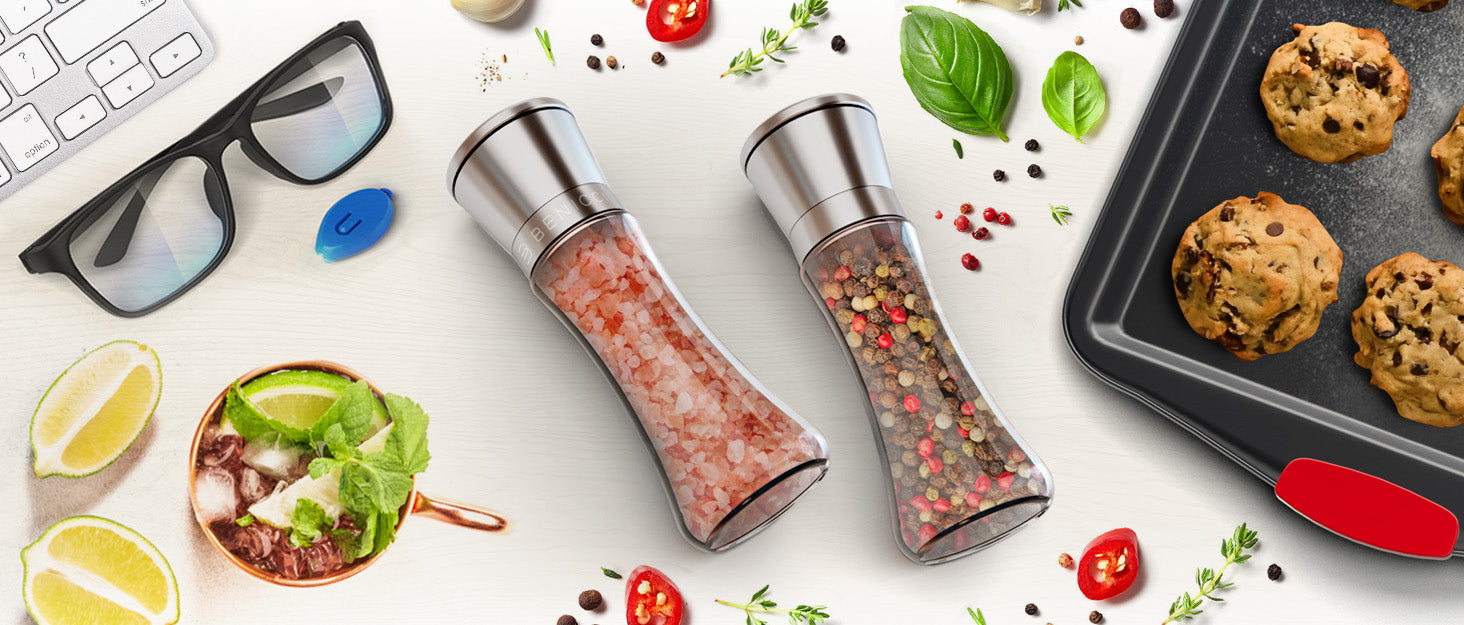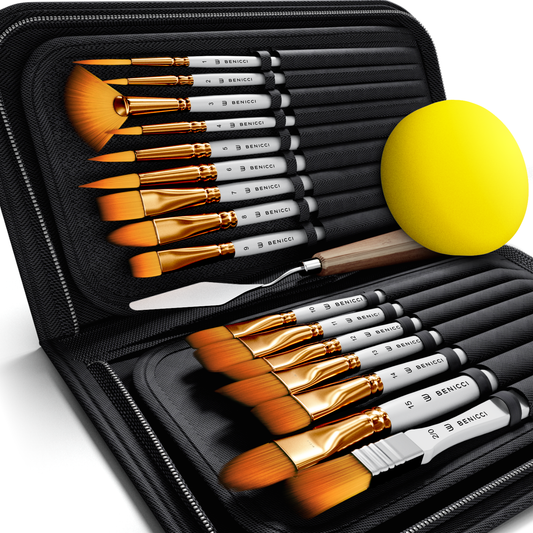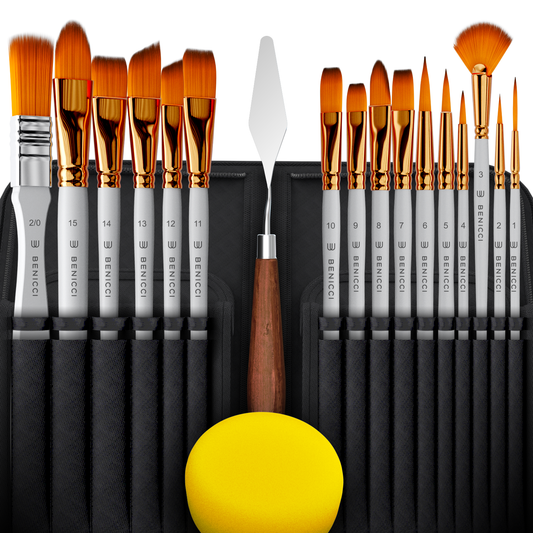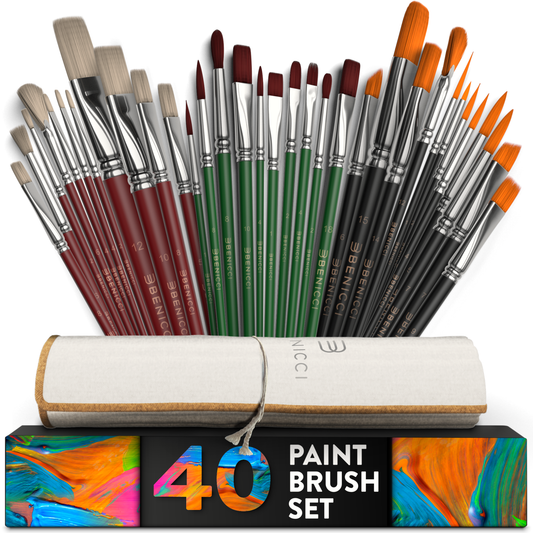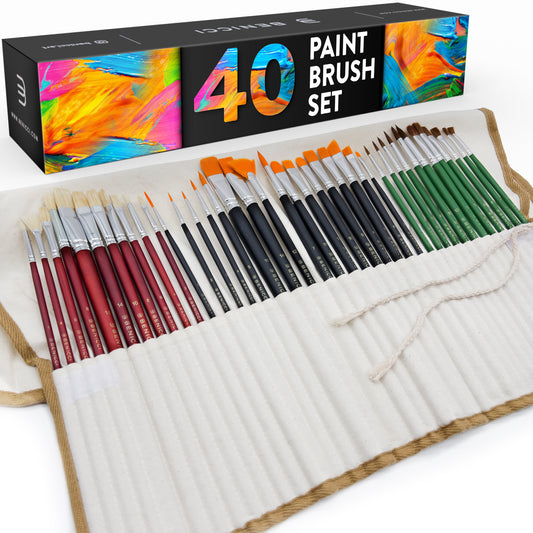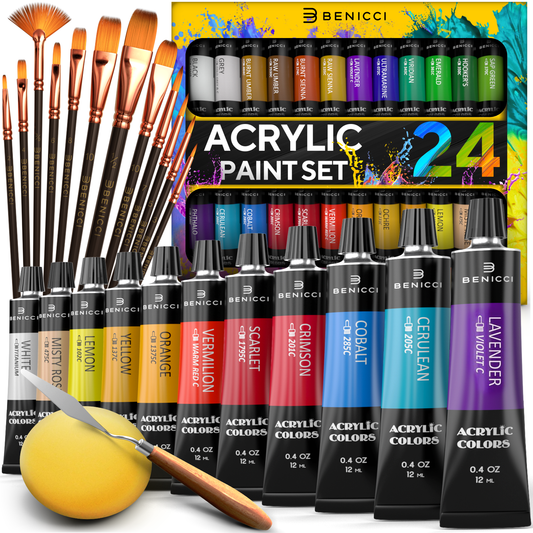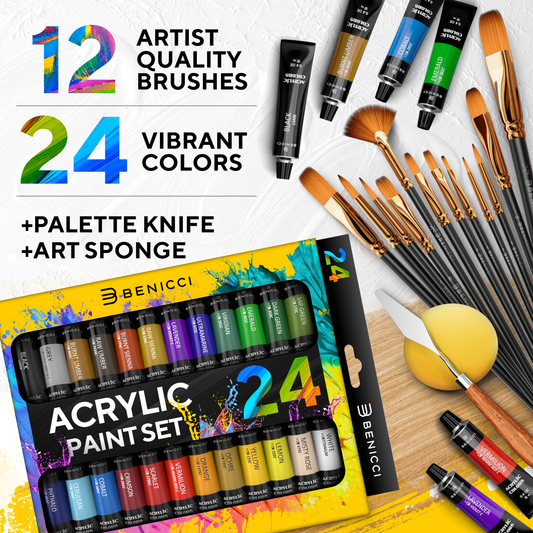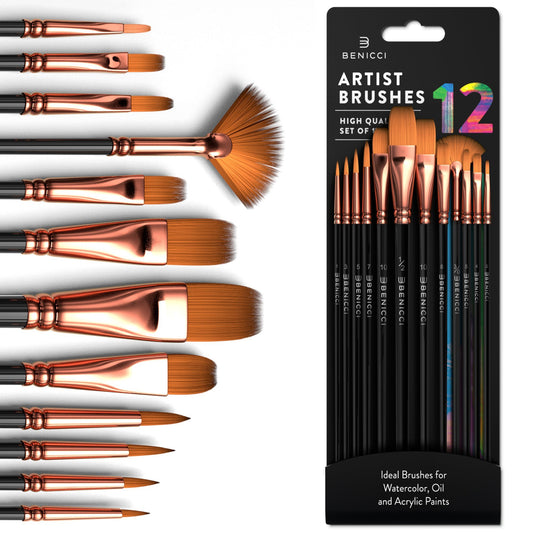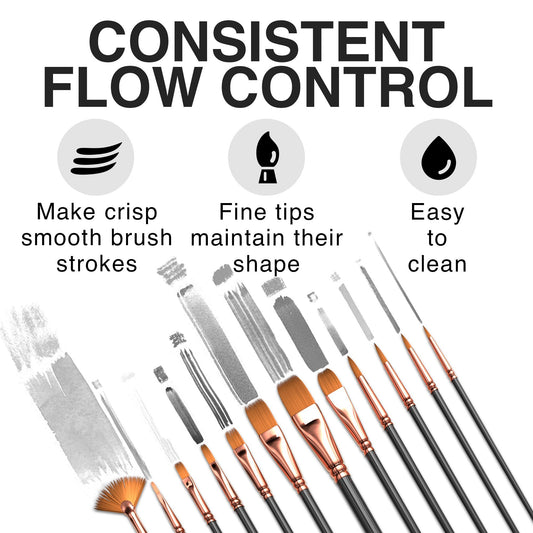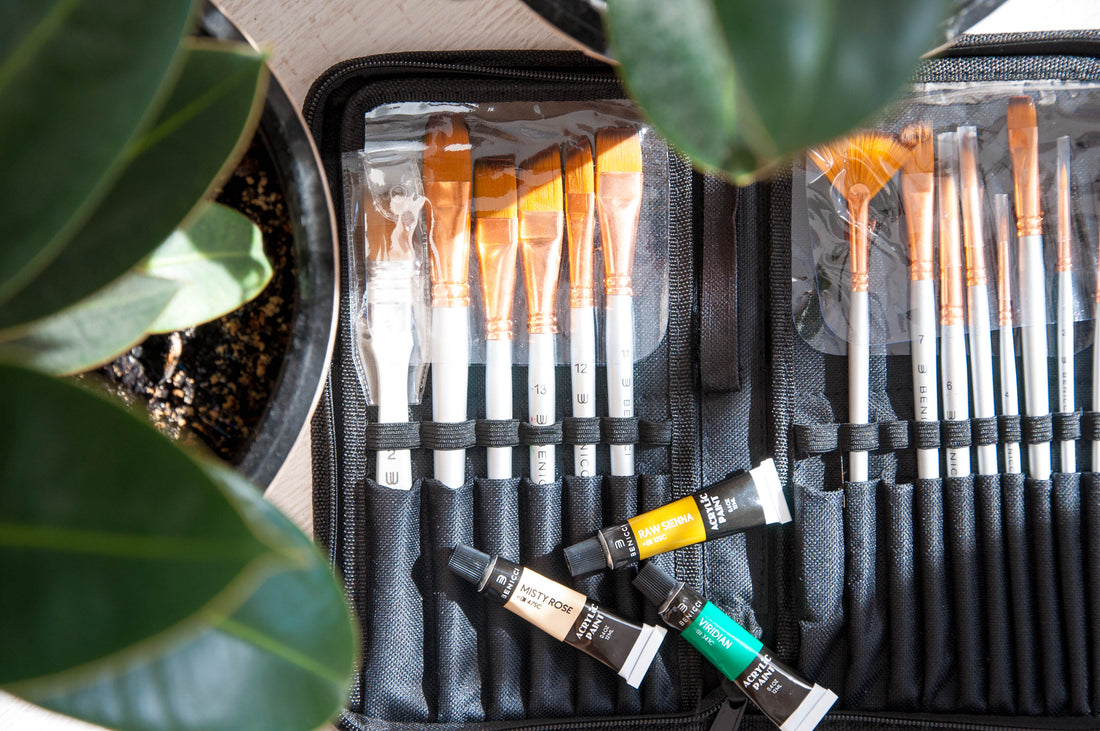
What brush for paint do I need? A helpful guide to choose the right brush for paint
Share
As a painter, it's important to know the different uses that brushes for paint have. Do you know those uses?
How to decide which paint brushes are the best for you?
Whether you paint as a hobbyist or a seasoned professional, having a good variety of paint brushes is vital. It's even better when you can get them all in the same place! That's why my best recommendation is the Benicci Brush Set. It has 16 different brushes and a carrying case, as well as a free mixing knife and art sponge.
Now that you have a good idea of what kind of brushes to buy, do you know where to buy them? Online stores are a good choice if you want the best deals and the convenience of fast shipping, but if you are concerned about the feel of your brushes then you may choose to buy them in-store personally.
Once you have your brushes, how do you decide which one to use for each purpose? That can be a daunting task, so let me break it down for you.
Which paint brush serves which purpose?
Before we get into the shapes of brushes, you should know that the sizes are also important. Smaller brushes are better for small details, while larger brushes are best for basecoating or creating bigger shapes, edges, and lines.
Getting started with shapes, a flat or glaze paint brush might be the first one you reach for as they are ideal for basecoating, blending colors and creating straight edges. As the name suggests, flat brushes are very flat, with a thin set of soft bristles.
Next, we have round brushes. Their bristles are pointed slightly, allowing you to have greater control of the width of your strokes. These brushes are favorites amongst watercolor artists due to the softer shapes they produce in paint. Beginners will especially appreciate round brushes if they are still getting the hang of controlling their paint brush.
Filbert brushes are a hybrid of the flat and round brush- they are flat with a slightly rounded tip. Filberts are great for landscape art, as their shape makes leaves and petals come out beautifully. Alternatively, you may use them for soft blending or rounded edges. They also serve as good brushes for washing colors.
If you're hoping to create a more detailed painting, line brushes will be your best friend! They are comprised of just a few long bristles, so tiny details such as grass or hair are easy to achieve. Of course, a line brush would not be the best choice for basecoating!
Another helpful brush is the fan brush. Their bristles are spread out into a flat fan shape, making them perfect for details such as branches on a tree, clouds, waves in the ocean, or even some light blending work. Fans are also good for dry brushing, which creates a rougher effect.
One last brush I'd like to mention is the angle brush. It is a flat paint brush with bristles cut into a sharp diagonal line. They are efficient at creating straight edges, as well as providing better control with shading and highlighting.
With your newfound knowledge of paint brushes and how to use them, are you ready to buy yourself a set and start dabbling in some paint? I hope this information has helped inspire you to express your creative side!
